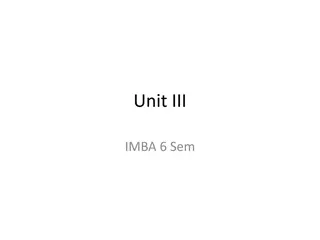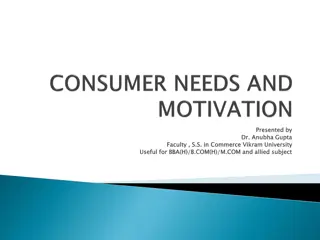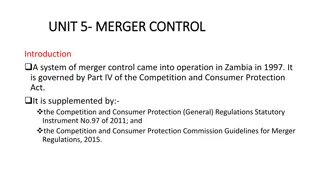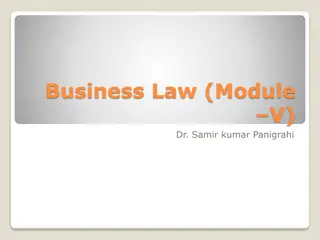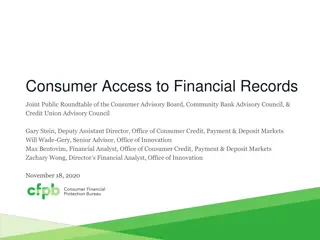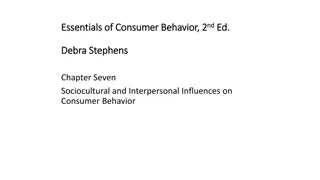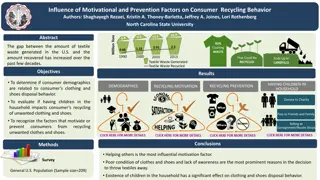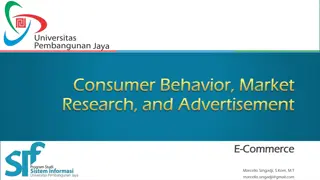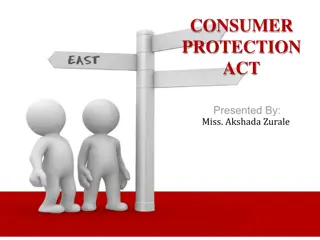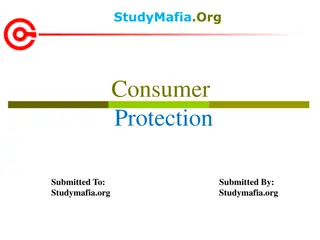Understanding Consumer Behavior: Factors and Influences
Explore the complex model of consumer behavior, delving into the factors and stimuli that shape buyers' decisions. From cultural and social influences to personal characteristics, learn how elements like culture, social class, reference groups, and psychological factors impact consumer choices. Gain insights into the dynamics of buyer behavior in the consumer market and the key components influencing purchase decisions.
Download Presentation

Please find below an Image/Link to download the presentation.
The content on the website is provided AS IS for your information and personal use only. It may not be sold, licensed, or shared on other websites without obtaining consent from the author. Download presentation by click this link. If you encounter any issues during the download, it is possible that the publisher has removed the file from their server.
E N D
Presentation Transcript
Consumer ??? Consumer ???
BUYER BEHAVIOR IN CONSUMER MARKET BUYER BEHAVIOR IN CONSUMER MARKET
STIMULUS RESPOND MODEL STIMULUS RESPOND MODEL Model of consumer behavior Buyer s Characteri stics Buyer Decision Process Buyer decision Marketing stimuli Other stimuli Cultural Need Recognition Product choice Product Political Social Price Economic Information Search Brand choice Personal Place Social Evaluation alternatives Dealer choice Psychologi cal Promotion Cultural Purchasing decision Purchase time Post purchase behavior Purchase amount
THE MAJOR FACTORS EFFECT ON CONSUMER BEHAVIOR THE MAJOR FACTORS EFFECT ON CONSUMER BEHAVIOR Buyer s characteristics or factors influencing buying behavior Cultural Factors Social Factors Culture Subculture Social Class Reference Group Family Roles & Status Personal factors Age& stage in the life cycle Occupation Economic Circumstances Life style, Personality ,self concept Psychological Factors Motivation Perception Learning Believes attitudes
(1) Cultural Factors 1.1 Culture 1.1 Culture Way of doing things Clothing and Food 1.2 Sub culture 1.2 Sub culture Way of doing things University subculture, Religion subculture 1.2 Social class 1.2 Social class Relatively homogeneous and enduring in the society Upper class, Middle class, Lower class
(2) Social Factors 2.1 Reference Groups 2.1 Reference Groups Membership Groups Family , Friends, relatives Secondary Groups - Religion groups, professionals, trade unions Aspiration groups Disassociate groups 2 2. .2 2 Family Family 2 2. .3 3 Roles Roles and and Status Status Eg: Family, Business organizations, Clubs, Unions
3) Personal Factors 3.1 Age & Stages of Life cycle 3.1 Age & Stages of Life cycle Bachelor Stage-Unmarried person Newly married stage-Young couple without children Full nest one-Youngest child below 6 years old Full nest two-youngest child 6 years or over Full nest Three Old couple with depended children Empty nest one-Older couple, No children living with them Empty nest two- Older children, not living with parents, Head of the household retired. Solitary survivor (In labor force)-One person in the household, still included to the labor force Solitary Survivor (retired) 3 3. .2 2 Occupation Occupation and and Economic Economic circumstances 3 3. .3 3 Life Life style style 3 3. .4 4 Personality Personality and and Self Self concept Actual self concept.- How he or she view her/him self Ideal self concept How he would like to see him self Other selves concept How he thinks about others circumstances concept
(4) Psychological Factors 4.1 Motivation 4.1 Motivation
4.2 Perception 4.2 Perception Select, organize and interpret information to create a meaningful picture about the world. 4 4. .3 3 Learning Learning Learning is individual s behavior arising from the experience. 4 4. .1 1 Beliefs Beliefs and Thought that person hold about something. and attitudes attitudes
Group Activity Group Activity - - Find Find Different cultures in Sri Lanka Religions Ethnic groups Regional Differences The products and services they love Different cultures in different countries and the products/services they love 10 marks which will be added to your final marks of the 10 marks which will be added to your final marks of the subject. subject. Date of Submission : 30 Date of Submission : 30th June 2018 th June 2018
Who Makes Buying Decisions Initiator Person who make the first decision to buy something. Influencer- Person who influence or advise the initiator. Decider Person who decide to buy. Buyer Person who purchase the product User Person who consume the product Department of Marketing Management University of Kelaniya Sri Lanka
TYPES OF BUYING BEHAVIORS High Complex Buying Behavior Computer, Vehicle Variety Seeking Buying Behavior Chocolate Significance Differences Among Brands Dissonance Reducing buying behavior Carpeting Habitual Buying Behavior Salt Low Low High Consumer Involvement Department of Marketing Management University of Kelaniya Sri Lanka
STAGES OF BUYING DECISION PROCESS Need /Problem Recognition Information Search Evaluating Alternatives Purchase Decision Post Purchase behavior BUYING DECISION PROCESS OF NEW PRODUCTS Awareness - Consumer become aware of the product Interest - Seek information about the new product Evaluation - Evaluate new product with the existing brand categories Trial - Try out new product in small scale to evaluate Adoption - Consumers decide to make full and regular use. Department of Marketing Management University of Kelaniya Sri Lanka
2.5 % 13.5 % 34 % 34 % 16 % EarlyAdopters EarlyMajority Innovators Late Majority Laggards Department of Marketing Management University of Kelaniya Sri Lanka




